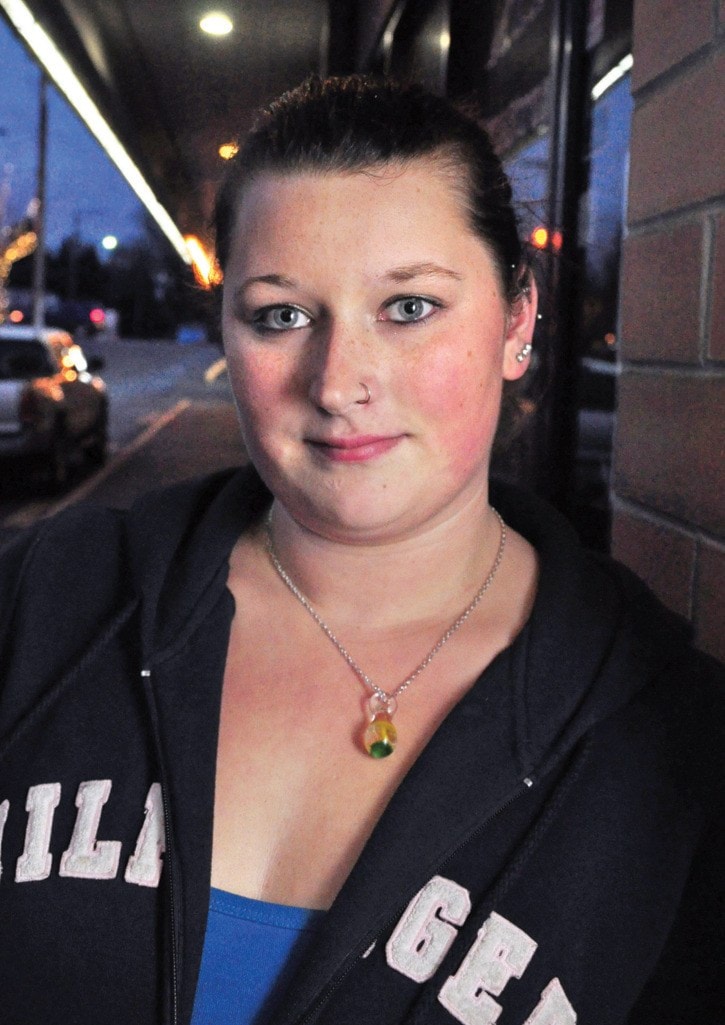Social service agencies are within a few months of establishing the first West Shore emergency shelter for teens and young adults, based in Langford.
A permanent shelter remains in planning, but a Langford business has offered free space for a temporary shelter, and at least two West Shore property developers have offered apartments, said Bill McElroy, chair of the West Shore emergency youth housing task force.
“This is going to happen in the next few months,” McElroy said. “We don’t know exactly what it’s going to look like, but I know the community is in the mood for this to happen.”
The task force, a consortium of youth service and housing agencies, non-profit groups, teens, and business owners, emerged last October after the Bright Ideas youth conference in Langford. Teens at the conference pointed out emergency shelters remain an ongoing need on the West Shore.
Unlike the more obvious homelessness in downtown Victoria, West Shore youth who leave or are kicked out of their homes often couch surf, drift downtown or sleep outside, near the shopping district at Westshore Town Centre, for instance.
“The last thing I want is West Shore youth to do downtown and find no (shelter) beds and wander around. Drug users and predators prey these kids,” said McElroy, a long-time social worker who heads up the Capital Region action team for sexually exploited youth.
“We want these kids to stay on the West Shore. They’re better off to be in a place they know, near friends, than be downtown.”
It’s hard to know how many youth are homeless or in unstable housing at any given time. From speaking with teens on the task force, McElroy guesses 50 to 60 kids are on the street or surfing couches.
Mitzi Dean, executive director of Pacific Centre Family Services Association and a member of the task force, said at least a few dozen of her clients struggle to find consistent shelter.
“I’d say 10 to 20 per cent (of our clients) are at some point of instability in living situations — couch surfing, getting in an argument and getting thrown out late at night, moving between other peoples’ houses,” Dean said.
“We know the need is there. Our staff work with youth all the time who don’t know where they will sleep at night.”
Pacific Centre Family Services has secured grant funding for the task force from the United Way. Dean said the housing effort has $40,000 worth of funds and in-kind donations, enough to run a temporary shelter for four months.
A consultant is scheduled to release a report to the group on Tuesday outlining the demand for youth shelter.
Following that in February, McElroy said they’ll examine the types of shelter models that would work for this area. It could be a group home or an intake centre, he said, and would be run by an existing housing non-profit.
McElroy said it doesn’t surprise him West Shore kids on the street – as someone who has helped rehabilitate youth trapped in the sex trade, he’s shocked some parents kick their kid out of the house.
“What adult in their right mind would kick out a kid?,” he said. “With all the drug peddlers, pimps and predators, that’s the last thing you need to do with these kids.”
Ashley Frerichs, a 20-year-old who sits on the youth housing task force, saw first hand the level of need five years ago when she couch surfed for four months, while still attending school and working a job.
A small subculture of semi-homeless, adrift youth congregate around the mall area, and couch surf or camp near box stores or in the woods along the Galloping Goose trail, she said.
“So many I know went into the bush and set up camp. One buddy camped for a year near Langford lake,” Frerichs said. “There definitely exists a need for (housing).”
Creating a temporary emergency shelter would at least allow social services to identify youth on the street and give them access to resources, she said, instead of them just falling off the radar.
“Ideally we’ll set up transition housing to provide stabilized living for youth, some kind of living environment where they know there’s food, a bed and people there to help them,” Frerichs said.
editor@goldstreamgazette.com
